Japandi Style Tips: Achieve a Minimalist & Cozy Home

Japandi, where Scandinavian simplicity meets Japanese warmth. It’s minimal without feeling sterile, cozy without the clutter. If you want a living room that exudes serenity, this style is the perfect choice. But how do you actually pull it off?
Good news: We’ve got a room that does it right. Let’s walk through each piece, why it works, how it embodies Japandi fundamentals, and what it brings to the space.
Table of Contents
The Japandi Sofa: Where Comfort Meets Intention

A sofa is the heart of any living room, and in Japandi design, it must balance form and function. Ours? A stunning contrast of dark wood and crisp white fabric. The clean lines ground the space, while the soft upholstery keeps it inviting.
Why this works:
- Contrast is key: Japandi thrives on the interplay of light and dark.
- Natural materials matter: Wood and fabric create warmth, a staple of the aesthetic.
- Less is more: No excessive tufting, no unnecessary embellishments, just beauty in simplicity.
It’s the kind of couch you sink into with a cup of tea after a long day.
The Oak Round End Table: A Touch of Organic Softness
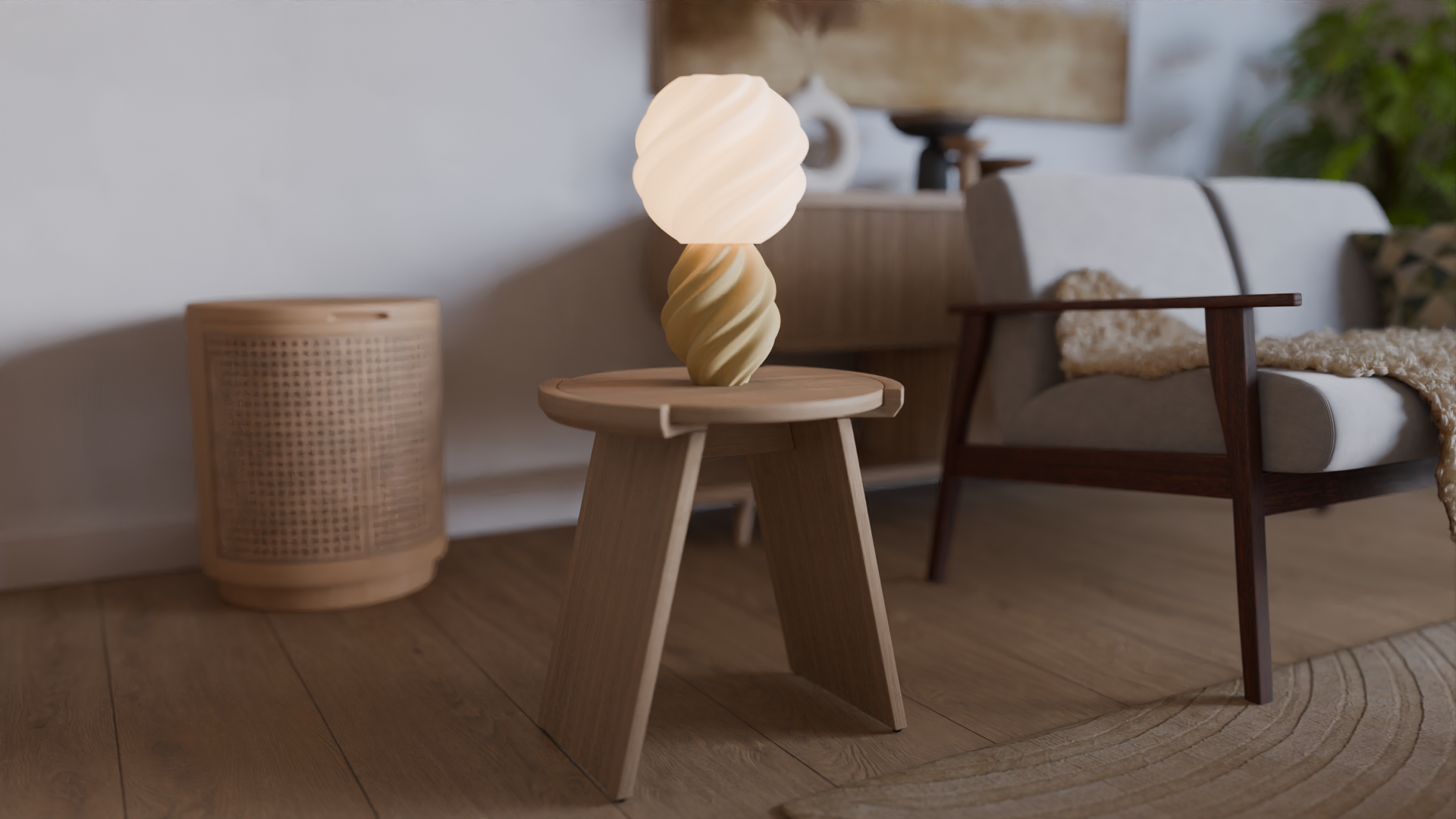
Japandi spaces love organic shapes, and this oak round end table is a perfect example. Its light wood tone blends smoothly with the natural elements of the room. But more than that, its circular form softens the straight lines of the sofa.
Why this works:
- Balance of shapes: Too many straight lines can make a space feel rigid, this table keeps it relaxed.
- Function meets beauty: It’s not just pretty, it’s practical.
- Natural wood tones: Lighter woods add warmth without overwhelming the space.
It’s the kind of table that quietly complements everything around it. A little unassuming, but absolutely essential.
The White Cloud Coffee Table: A Subtle Statement Piece

Now, let’s talk about the coffee table because this one is special. The cloud shape adds an almost sculptural feel, yet it remains understated. The white finish? Pure, serene, and fully Japandi.
Why this works:
- Playful yet minimal: The cloud-like form introduces softness without straying from the aesthetic.
- Airy and light: A Japandi space should always feel open and uncluttered.
- A neutral anchor: White provides a quiet base for other elements to shine.
It’s the kind of piece that catches your eye without demanding attention.
The Storage Side Table: Beauty with a Hidden Purpose
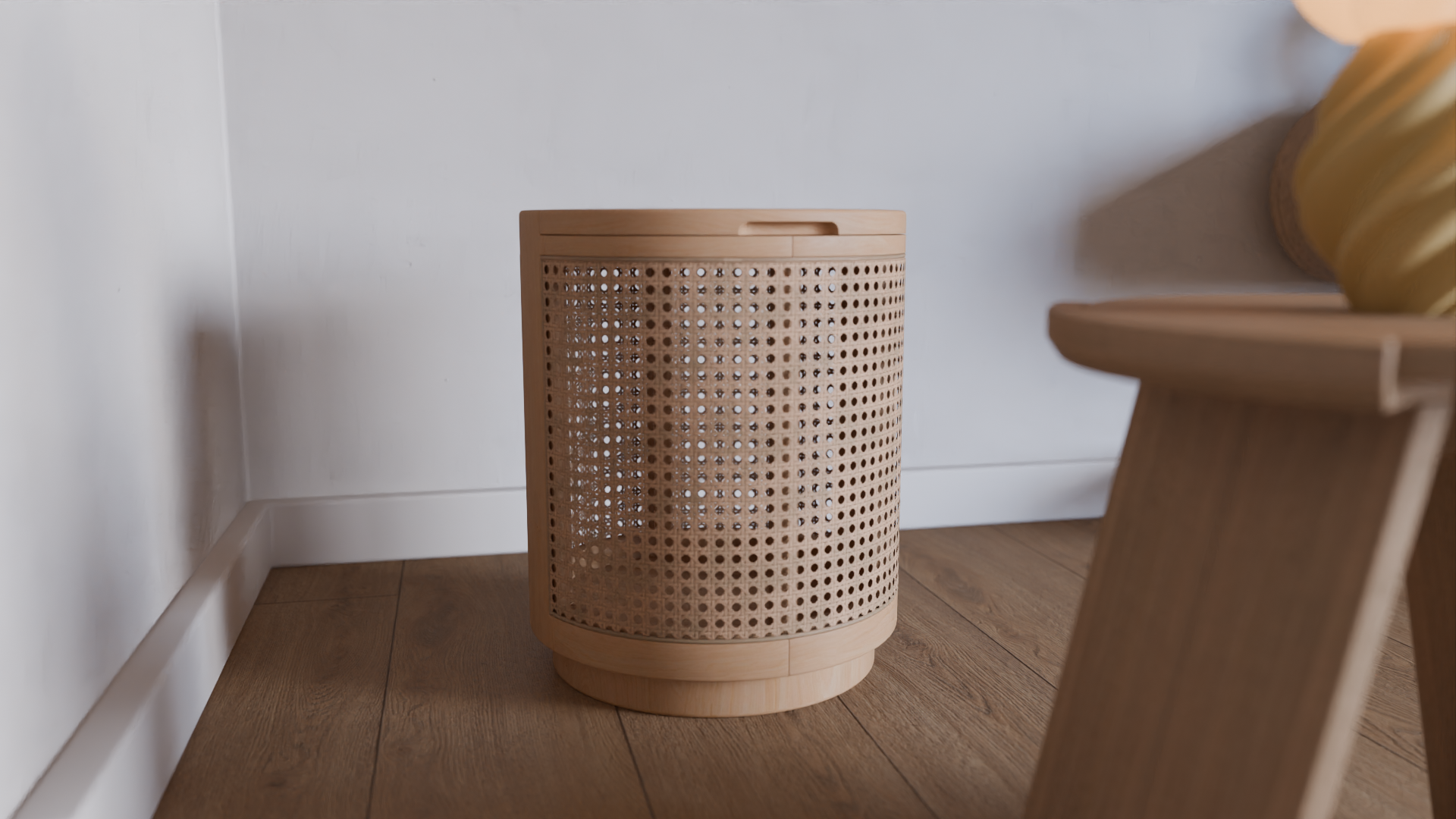
Clutter? Not in a Japandi space. That’s why this storage side table is a must. It looks sleek in light wood, blending perfectly into the environment, but open it up, and you’ve got hidden storage.
Why this works:
- Functionality is everything: Every piece in a Japandi home should serve a purpose.
- Hidden storage = clean space: No unnecessary visual noise.
- Soft, natural hues: Light wood keeps things feeling open and fresh.
If you ever wonder where to put that extra blanket or stack of books, this side table has your back.
The Curved Console Table: Subtle Sophistication

A console table might not be the first thing you think of, but trust me, it makes all the difference. This one, with its graceful curved edges and light wood finish, adds elegance without fuss.
Why this works:
- It adds movement: The curves keep things visually dynamic.
- Perfect for styling: A ceramic vase, a soft linen runner, done.
- Doesn’t take up too much space: Japandi rooms feel open and breathable.
A little touch, but a big impact.
The Foldable Seats: Flexibility Meets Style
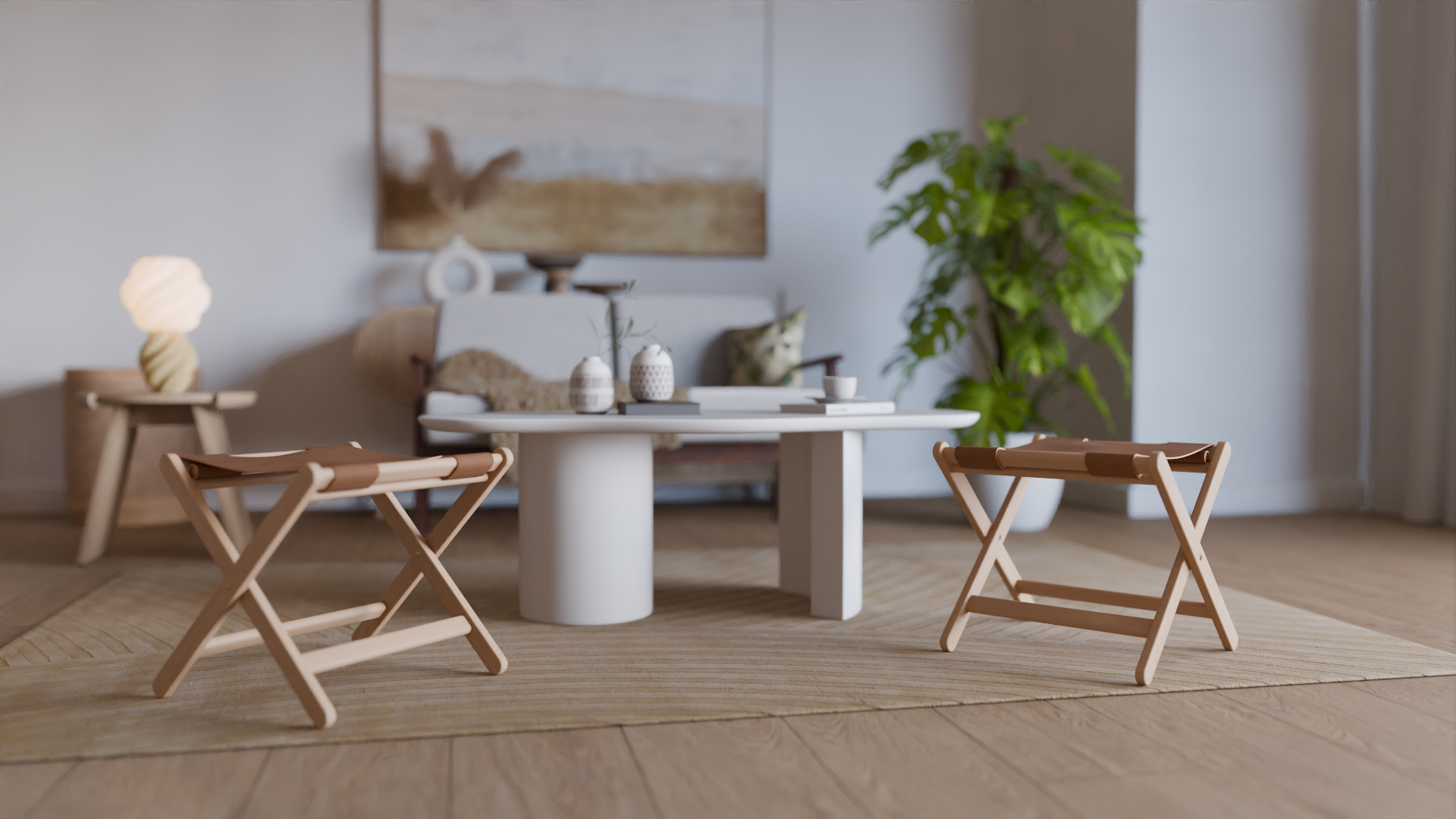
Extra seating that doesn’t clutter the space? Yes, please. These foldable seats in light wood are simple, lightweight, and versatile. You can tuck them away when not in use or move them around effortlessly.
Why this works:
- Functionality first: Flexibility is key in Japandi homes.
- Minimalist design: No bulk, no unnecessary frills.
- Warm wood tones: Always a staple in Japandi aesthetics.
Perfect for guests, perfect for quiet mornings alone.
The Beige Rug: Soft Underfoot, Easy on the Eyes
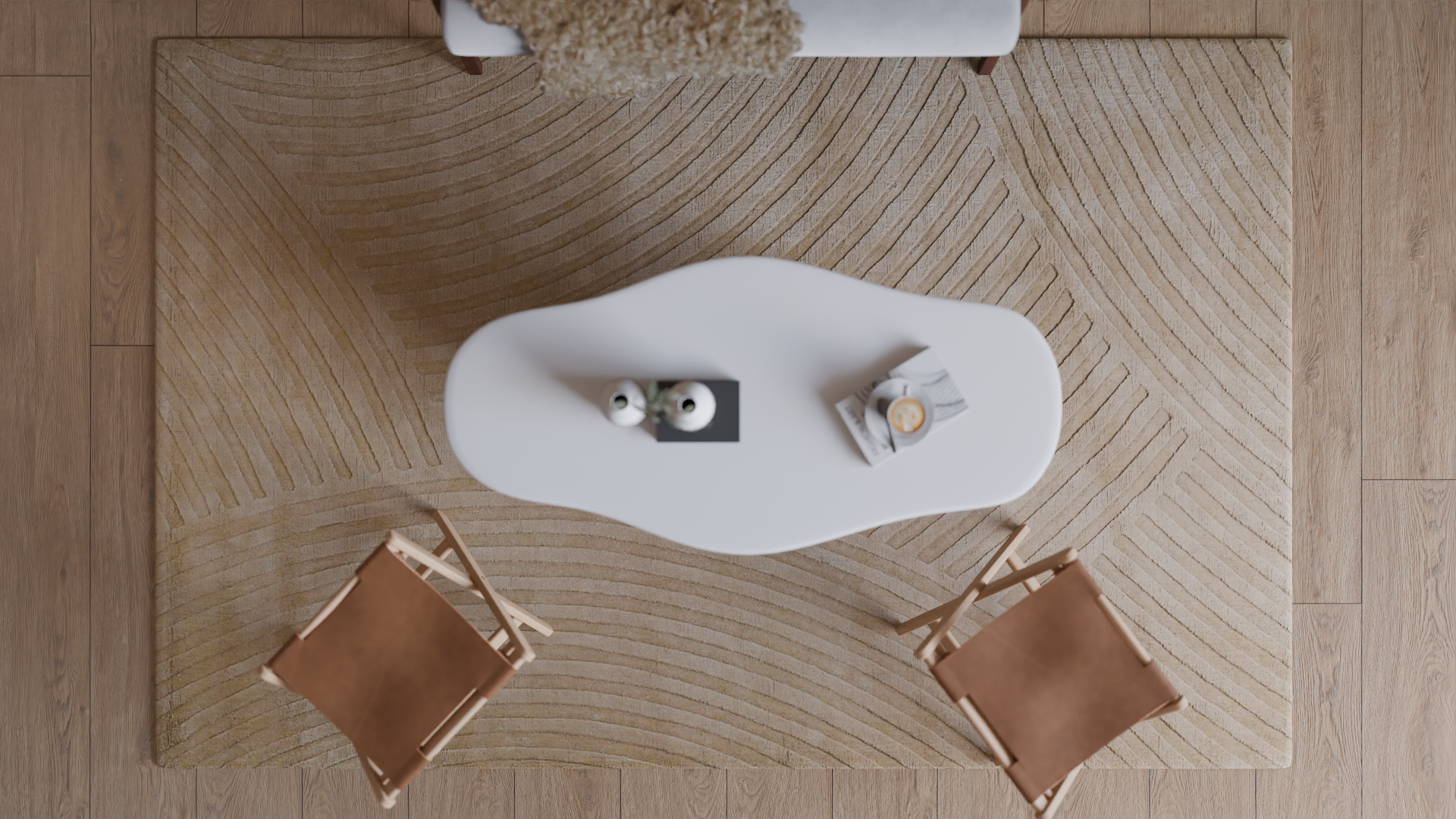
A rug should ground the space, not overpower it. This beige rug, with its gentle curved motif, does exactly that. It adds just enough texture to keep things interesting while keeping the palette neutral.
Why this works:
- Subtle patterning: Keeps it from being boring but doesn’t overwhelm.
- Softens the space: Japandi is about comfort as much as it is about style.
- Ties everything together: A neutral base makes the rest of the decor pop.
Step onto it barefoot, and you’ll see why it belongs here.
The Beige Painting: Quiet Art for a Quiet Space

Japandi doesn’t scream for attention, and neither should the art. This beige painting fits into the environment rather than competing with it. It’s abstract yet calming, exactly what the space needs.
Why this works:
- Neutral, soothing tones: No harsh colors disrupting the peace.
- Textural depth: Adds dimension without being overwhelming.
- Harmonizes with the room: The best Japandi art feels like a natural extension of the space.
Art that whispers, not shouts.
The Monstera Plant: A Breath of Life
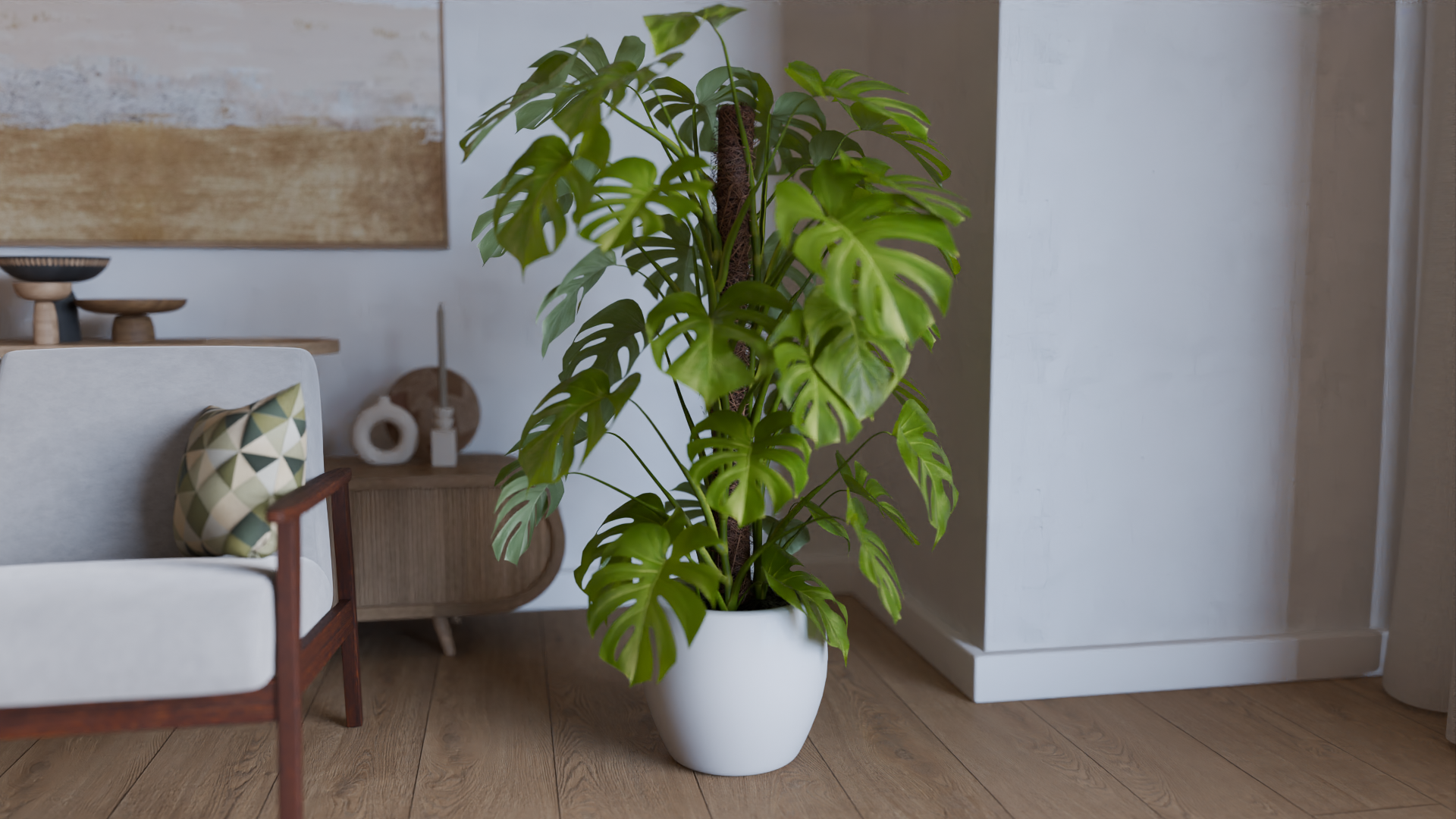
Japandi may be minimalist, but it’s never lifeless. This Monstera plant, housed in a white ceramic glazed pot, introduces just the right amount of greenery.
Why this works:
- Plants are essential: They bring a sense of calm and vitality.
- Minimalist yet lively: A Monstera is sculptural, not chaotic.
- The white pot keeps it Japandi: Simple, clean, and refined.
Nature belongs in every Japandi space.
The Lueur Ondulée Lamp: A Japandi Essential

Finally, let’s talk lighting because nothing sets the mood like a lamp. The Lueur Ondulée, with its soft wavy form, is the perfect finishing touch. Placed on the oak end table, it adds warmth and dimension to the space.
Why this works:
- Gentle curves: Soften the room without disrupting its harmony.
- Soft, warm glow: Japandi lighting should be ambient, never harsh.
- An art piece in itself: Functional, but also sculptural.
If you’re serious about creating a Japandi interior, the Lueur Ondulée is a must-have, and guess what? You can get yours here. Trust me, once you turn it on in the evening, you’ll wonder how you ever lived without it.
Final Thoughts: Creating Your Own Japandi Haven
Japandi is about choosing the right pieces, the ones that feel intentional, peaceful, and timeless. With the right mix of natural materials, soft shapes, and functional beauty, you can create a space that truly feels like home.
